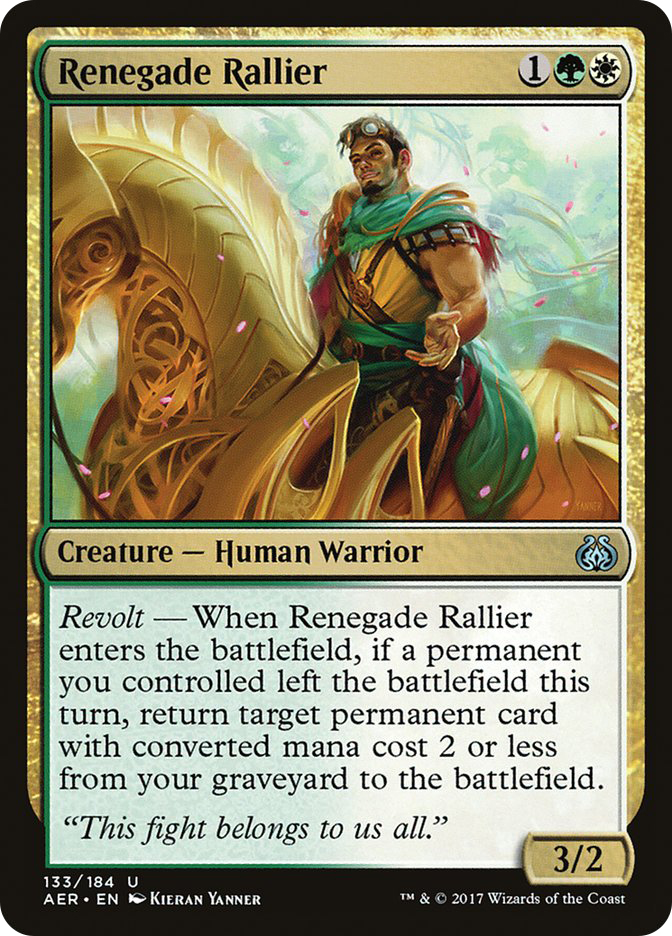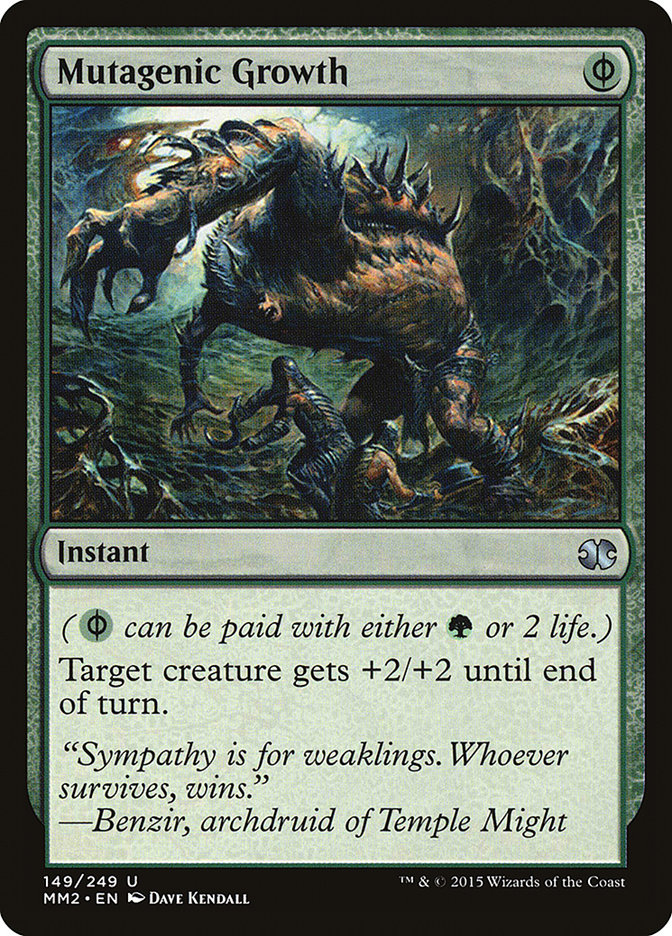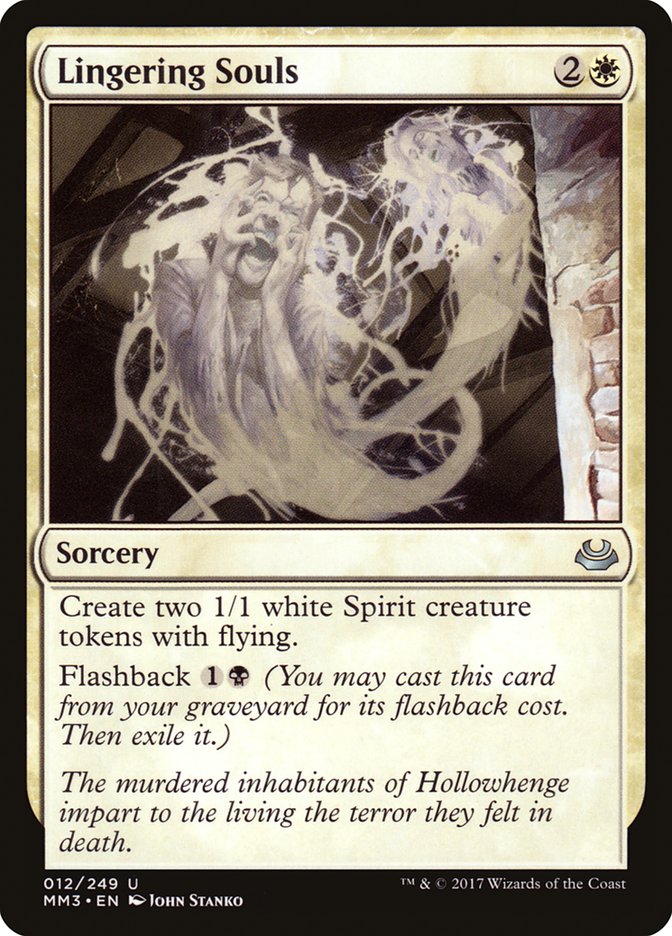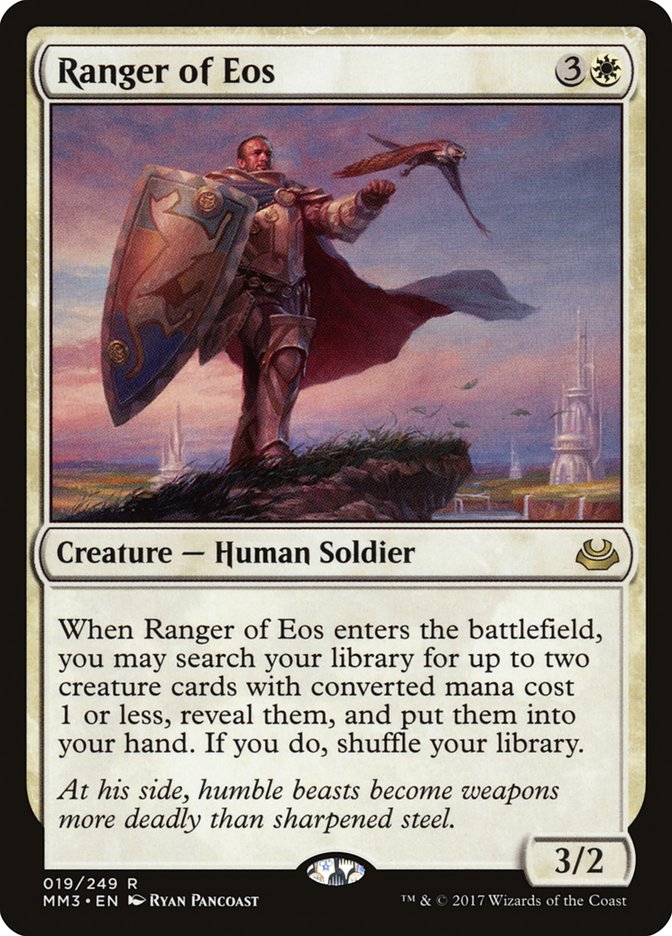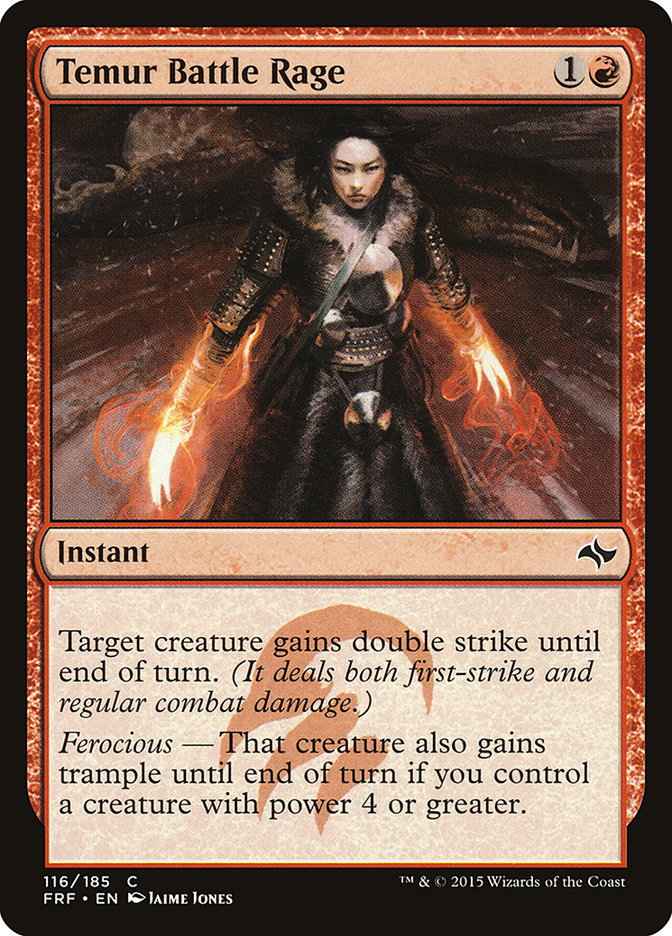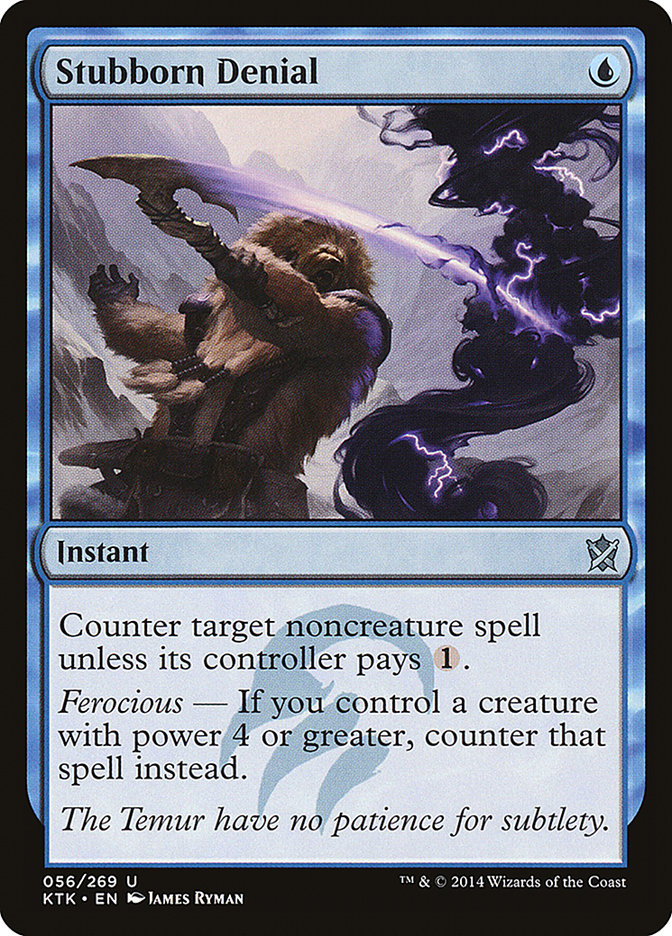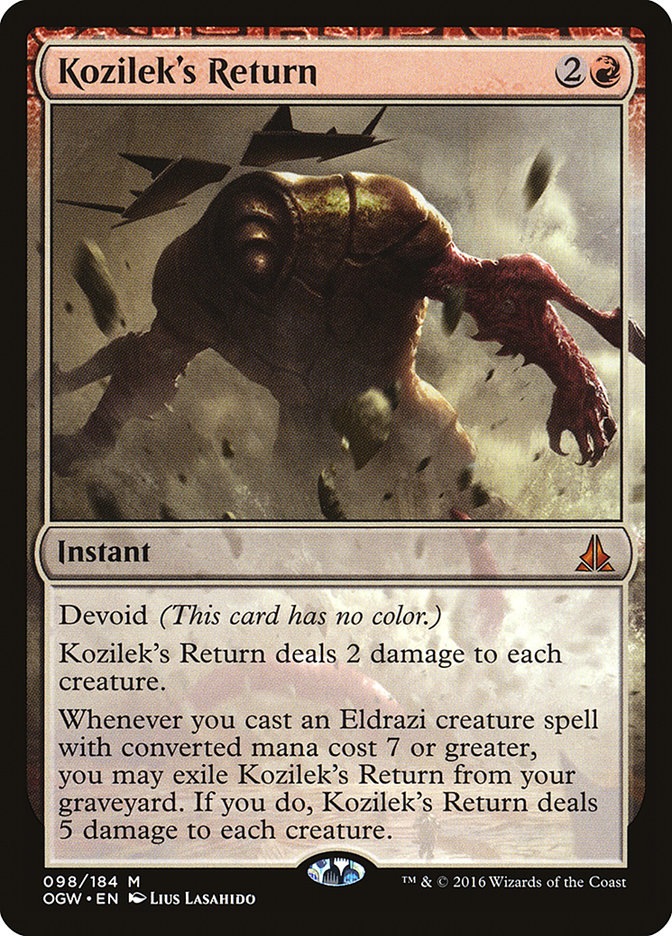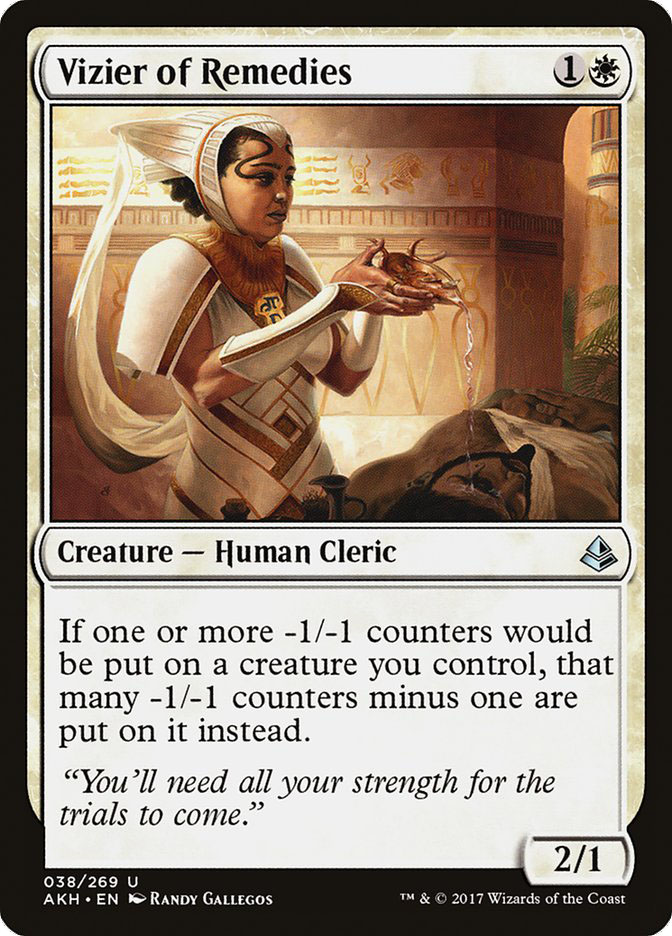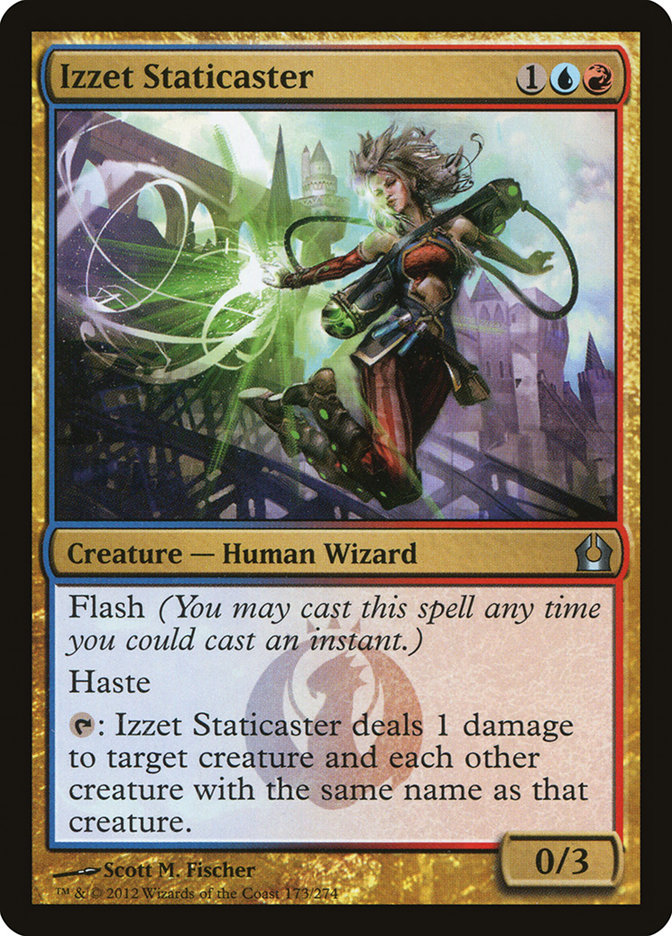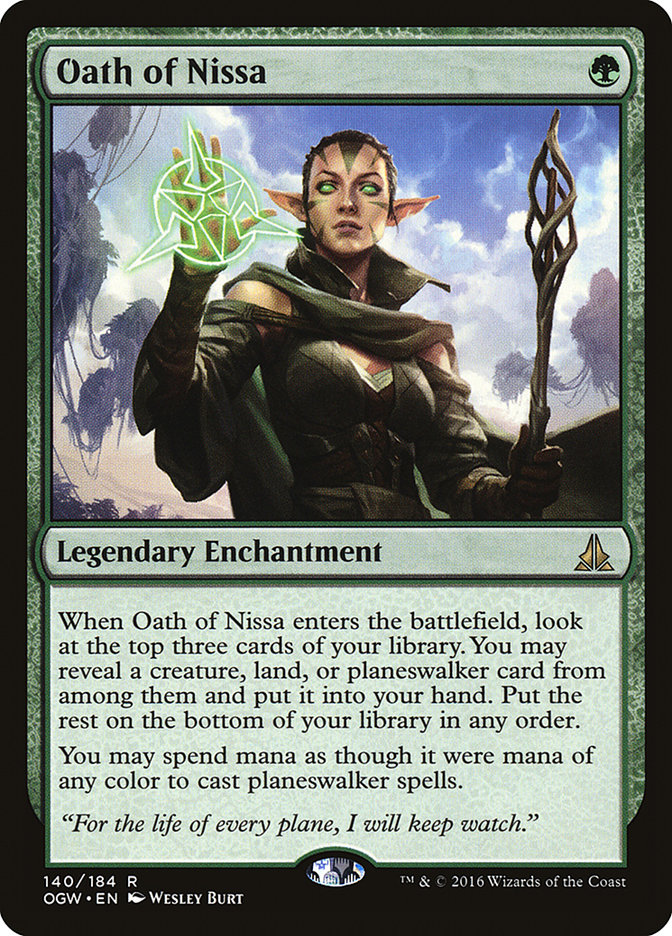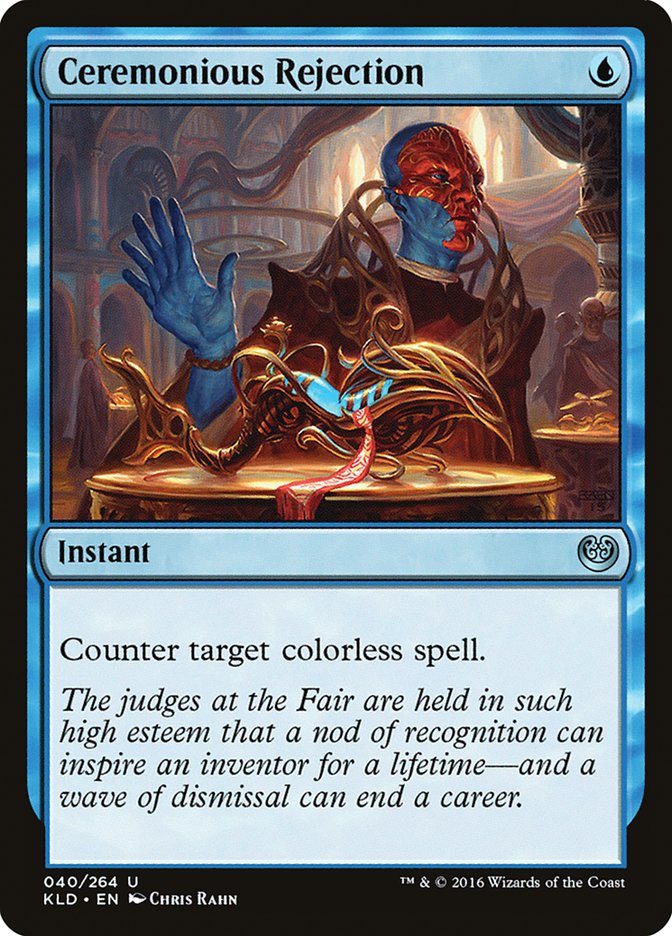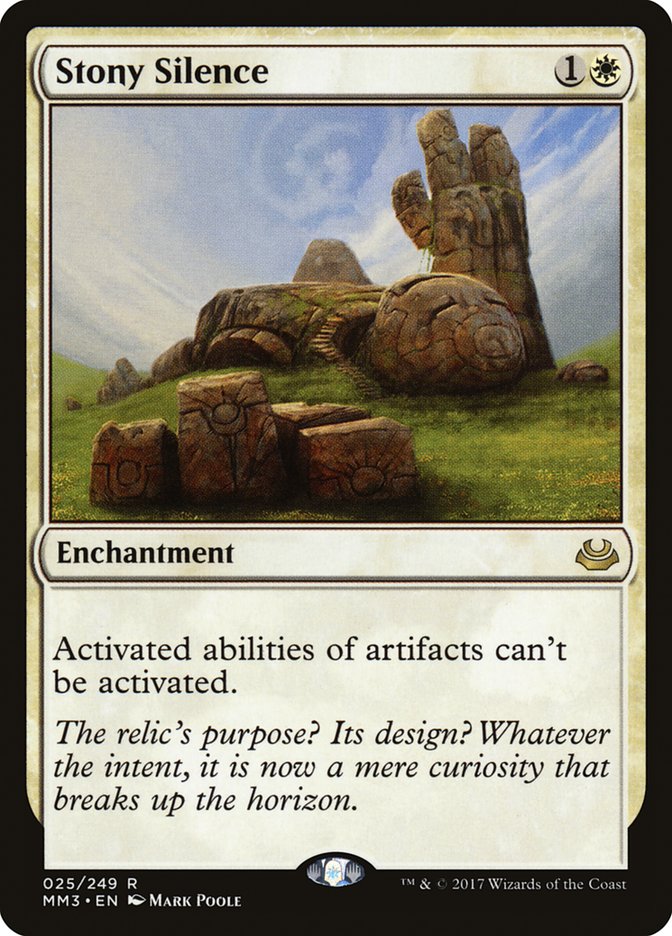There were three large Modern events last weekend and it was a breath of fresh air, even for Modern.
Naturally, those events were dominated by Death’s Shadow variants. Grixis Death’s Shadow didn’t win all three tournaments last weekend, but it did get first, first, and third. It’s not quite as easy as “register Death’s Shadow, win the tournament,” as other decks did well, but it’s still a Death’s Shadow format.
This weekend as a whole was full of innovation, and Death’s Shadow was certainly part of that.
Grixis Death’s Shadow may have finally risen to prominence, but there are other, far more interesting builds that also did well.
Creatures (26)
- 4 Street Wraith
- 4 Tarmogoyf
- 4 Wild Nacatl
- 4 Death's Shadow
- 2 Ghor-Clan Rampager
- 4 Monastery Swiftspear
- 2 Grim Flayer
- 2 Renegade Rallier
Lands (17)
Spells (17)

While I highly doubt I’ll be sleeving up this deck any time soon, it’s worth noticing for a few different reasons. If you don’t want to be “Jund Guy,” there is plenty of room in the format to be “Zoo Guy.” This deck happens to have Death’s Shadow, but it’s basically the exact opposite of the midrange Death’s Shadow decks. Instead of controlling the game in the early turns and eventually killing its opponents, it’s interested in skipping the middleman and getting right to the attacking.
Honestly, it doesn’t seem like such a bad plan. Obviously the discard (and potential Stubborn Denial) give you plenty of game against other things, but do you really need them when you’re threatening turn 3 kills? Some of the time, you will, but that’s what the sideboard is for. Modern usually has a stigma where you need to be able to interact with turn 3 kills, but that’s not always the case. You can’t plan to beat everyone’s best draws, so don’t bother. Focus on everyone else.
Renegade Rallier is nice, especially in a Zoo deck. Your first creature is probably going to bite it to a Lightning Bolt anyway. For grindy matchups, there are very few cards that would be better. You could easily play something slower like Lingering Souls or Ranger of Eos, but Renegade Rallier is much faster, and it allows you to get card advantage while also pressuring them. This strategy needs to be looked into.
Having a combination of Tribal Flames, Lightning Bolt, Mutagenic Growth, and Temur Battle Rage is also really nice, as it means your opponent is never safe. At twenty and you think you stabilized? Guess again.
There’s also the low, low land count of seventeen. I don’t think we’ve ever seen a pure Zoo deck with that few lands before. Can you imagine curving out to three and then mostly stopping? That’s Wild Nacatl’s dream! Maybe we should be experimenting with Street Wraith and Mishra’s Bauble in decks that don’t play Serum Visions? Why do we keep having to learn this lesson over and over again?
Even if they aren’t pretty, Mishra’s Bauble and Street Wraith lead to some very consistent draws, even with only seventeen lands. Filtering with Mishra’s Bauble plus fetchland helps, but so does cantripping in general, especially for zero mana. There will obviously be points where the life loss from Street Wraith matters, but right now, that doesn’t seem to be the case.
Then again, if this build of Death’s Shadow becomes more popular, that could all change.
Creatures (13)
Planeswalkers (3)
Lands (18)
Spells (26)

I’m actually kind of offended.
You can play Abzan, Sultai, Grixis, or Jund (where splashing Stubborn Denial is actually great) and I’m fine with it, but playing all five colors in Death’s Shadow is pure nonsense.
There are going to be matchups where you would want access to Lingering Souls (or even just Ranger of Eos) and Stubborn Denial, but you’re better off just leaving one of the colors on the sidelines in those post-sideboard games instead of trying to do too much. If you’re stuck on two land, which land do you fetch? There’s also no guarantee that your third land is going to provide the color you want.
The real solution is to be prepared for Lingering Souls, and it’s very unlikely that you’ll lose to it. Additionally, they’re likely going to overvalue Lingering Souls against you, which also works in your favor. It doesn’t take much. A single copy of Liliana, the Last Hope; Maelstrom Pulse; or Izzet Staticaster is going to go a long way.
Ranger of Eos is a great card, but not one that’s worth splashing for, especially if you’re already splashing a fourth color. It’s not necessary on its own, and Lingering Souls isn’t something I’m even convinced the mirror revolves around.
The theory of it not mattering too much because the nonblack, nongreen cards in the deck are minuscule doesn’t strike me as a real argument. You could max on B/G cards and only play one card of each of the splashes, but that doesn’t seem entirely doable if you’ve decided you need access to Terminate.
While Temur Battle Rage is still a reasonable option, Stubborn Denial seems like a mostly better choice. It’s a card that interacts with your opponent, covers the top of their deck, and helps the close Burn matchup. If you don’t have Temur Battle Rage, you are probably giving your opponent an extra turn, but Stubborn Denial should mean you have the game locked up in most situations anyway. The games you lose in that situation are going to be the ones against decks that flood the battlefield, and that’s a legitimate concern, but post-sideboard, your sweepers should clear that up.
Also, why Kozilek’s Return? The Dredge matchup is difficult enough as is. Kozilek’s Return is slightly better against the new Collected Company decks, but not by much. Obviously Marcio is going to have a difficult time casting Anger of the Gods with his manabase, but it’s yet another reason to keep it simple.
One thing I’m actually on board with is the move towards Terminate and things that kill Gurmag Angler in general. More copies of Liliana also seem great the more the format tries to grind out Death’s Shadow.
We have officially run through the sequence of:
1. New card gets introduced into the format.
2. New card gets a deck built around it (in this case, Counters Company).
3. New deck is played a lot initially, but the results are lukewarm.
4. New deck is declared “not very good.”
5. Since new deck isn’t very good, people are free to continue experimenting.
And here we are.
As is typically the case, the initial decks built around new cards are not optimal, nor are they even the best possible versions of those decks. Especially with decks built around Collected Company and Chord of Calling, you have no shortage of options.
Creatures (31)
- 4 Birds of Paradise
- 2 Eternal Witness
- 3 Magus of the Moon
- 4 Devoted Druid
- 3 Noble Hierarch
- 4 Knight of the Reliquary
- 3 Duskwatch Recruiter
- 2 Renegade Rallier
- 1 Walking Ballista
- 1 Rhonas the Indomitable
- 4 Vizier of Remedies
Lands (21)
Spells (8)

Grand Prix Kobe was absolutely brutal, with 13-2 going all the way down to seventeenth place. Three players at 12-3 didn’t make money. With the top seventeen decks having good enough records to make Top 8 at most Grand Prix, they deserve a closer look. The most intriguing one for me was easily this Counters Company deck in ninth place.
It’s a G/W base with the Devoted Druid / Vizier of Remedies combo, but it also splashes red for Magus of the Moon and Kessig Wolf Run, which is another way to kill your opponent once you have arbitrarily large amounts of mana. That might seem like a bit of a non-bo, but presumably if you have Magus of the Moon on the battlefield, you are probably doing all right. Additionally, there are other ways to combo your opponent, including Walking Ballista and Rhonas the Indomitable, both of which can be found with Duskwatch Recruiter.
There’s no removal in the maindeck, which is kind of surprising, but there are only 30 hits for Collected Company. You could potentially go lower, but it will certainly make the deck worse.
Naya seems to add more to the deck than Abzan, as the black cards are generally unimpressive. Kessig Wolf Run and the other red cards are great additions, which just goes to show that you should never be satisfied doing what everyone else is doing.
Creatures (31)
- 4 Birds of Paradise
- 4 Eternal Witness
- 4 Devoted Druid
- 4 Noble Hierarch
- 4 Knight of the Reliquary
- 4 Reflector Mage
- 2 Duskwatch Recruiter
- 1 Walking Ballista
- 4 Vizier of Remedies
Lands (20)
Spells (9)

What if we took the ninth-place deck from Grand Prix Kobe and added another color and another combo? That deck already had Knight of the Reliquary to find Kessig Wolf Run, so why not just add Retreat to Coralhelm too?
Four Eternal Witnesses is a lot, which makes me wonder if it was a nod to Death’s Shadow and their disruption, or just because assembling one of the combos is so important that having four is completely reasonable. Even if you decide that you want multiple Eternal Witnesses, four strikes me as high without also playing some spot removal maindeck.
I’m kind of shocked to see so many Izzet Staticasters in the sideboard without one maindeck. The combo with Retreat to Coralhelm is absurd, Kelvin has a bunch of Chords, and even the raw Izzet Staticaster is good against most Modern decks. With the full four Reflector Mages, I’d have to imagine they anticipated most of their matchups to be creature-based, so it’s a head-scratcher.
That’s minor nit-picking though. As always, Kelvin’s decks impress me.
Creatures (27)
- 4 Birds of Paradise
- 1 Eternal Witness
- 4 Devoted Druid
- 3 Noble Hierarch
- 4 Knight of the Reliquary
- 2 Scavenging Ooze
- 2 Duskwatch Recruiter
- 3 Spell Queller
- 1 Fairgrounds Warden
- 1 Walking Ballista
- 2 Vizier of Remedies
Lands (20)
Spells (13)

Eli Kassis had his own version of the Devoted Druid / Retreat to Coralhelm deck, which he used to finish in the Top 32 of SCG Baltimore. Overall, I think I like Kelvin’s approach more.
Spell Queller is a fine addition, but it seems weaker than Reflector Mage in general. Clearly that’s just going to be a function of the metagame, but Spell Queller is way less effective against its targeted archetype than Reflector Mage is against the decks that it targets.
Oath of Nissa is odd and the sideboard is all over the place, but I do like the extra pressure and fewer copies of Vizier of Remedies.
Creatures (34)
- 4 Llanowar Elves
- 4 Heritage Druid
- 4 Devoted Druid
- 3 Nettle Sentinel
- 2 Elvish Visionary
- 4 Elvish Archdruid
- 4 Ezuri, Renegade Leader
- 4 Elvish Mystic
- 4 Dwynen's Elite
- 1 Vizier of Remedies
Lands (18)
Spells (8)

Meanwhile, in Copenhagen, teammate Martin Juza lost playing for Top 8 of a Grand Prix with yet another version of the combo. His method of choice was a powerful Elves beatdown plan, which is something I can get behind.
Devoted Druid is a mana creature, but Vizier of Remedies rarely can attack or block. It doesn’t have a lot of utility outside of being combo pieces. Since Collected Company and Chord of Calling are the best enablers to play alongside them, your combo deck is inevitably going to consist of a bunch of creatures.
While you can certainly rely on comboing your opponent every single game, the best combo decks tend to be the ones where the combo is the backup plan. Outside of Knight of the Reliquary, the above decks are going to have a hard time killing anyone with damage.
I’d like to see a shift toward having a more focused Plan A, and Martin’s (Andrew Baeckstrom’s) deck does that wonderfully.
Creatures (8)
Lands (24)
Spells (28)
- 4 Lightning Bolt
- 4 Serum Visions
- 4 Lightning Helix
- 4 Electrolyze
- 4 Logic Knot
- 4 Cryptic Command
- 4 Path to Exile
Sideboard

It’s been a while since we’ve seen a good old-fashioned Snapcaster / Bolt deck, and that’s exactly what this is. Jeskai can play a control game, but it’s far more likely that it burns its opponent out on turn 7 instead.
No two-mana counterspell and no Spell Snare while playing the full amount of Cryptic Commands is impressive, but there are Spell Quellers to fill the gap. It does remove some of the utility from Snapcaster Mage, but flashing back a burn spell is basically the entire plan.
The Ceremonious Rejections in blue sideboards are becoming increasingly more common. Those, combined with Spreading Seas, are a big middle finger to Todd Stevens and his beloved Eldrazi Tron. Spreading Seas is one of the best cards against Death’s Shadow decks and other multicolored decks with low land counts.
Tamada’s sideboard is particularly great because his deck is effectively a Burn deck, and his sideboard features a wide variety of cards that can be brought in against different matchups. When your main plan is “get your opponent dead,” you don’t need pure hate cards except in the most extreme circumstances. Ceremonious Rejection is the closest thing to a narrow card in his sideboard, and it’s one that is warranted.
Creatures (10)
Planeswalkers (6)
Lands (22)
Spells (22)

This isn’t Splinter Twin, but it’s also probably not as bad as it looks. I really don’t have much to say about the specific build except that maindeck Spreading Seas are great. Remand is less impressive, but having eight ways to cantrip into the combo is probably the way to go.
Creatures (9)
Lands (23)
Spells (28)

My word. This deck is incredible.
Glory-Bound Initiate feeds Painful Truths which feeds Collective Brutality. Chiba is basically splashing Glory-Bound Initiate to do it, but it looks good. I’m sure the numbers could be cleaned up, but this shell looks great.
Creatures (16)
Lands (23)
Spells (21)

The winner of Grand Prix Kobe is an unlikely one: B/W Eldrazi.
Death’s Shadow has been the one with the removal, disruption, and fast clock as of late, but that doesn’t mean no one else can play that game. Even though most Eldrazi decks are either tempo (Bant) or big mana (Tron), the classic disruptive Eldrazi deck is still viable.
Maindeck Relic of Progenitus has got to be awesome in this format and is probably something more people should do.
***
The state of Modern is unusual. It’s quickly getting to the point where the metagame is Death’s Shadow, Collected Company, and everything else. Overall, that’s not bad, especially considering the “everything else” part of the metagame is such a diverse group of decks. We’ve seen worse Modern metagames.
On one hand, it’s difficult to actually metagame in a Modern tournament. You know there will be a relatively high concentration of the best decks, but past that, everything is up for grabs. That can be kind of frustrating when you’re thinking about how your tournament went and you realize your Stony Silences sat in your sideboard untouched for fifteen rounds.
It creates an interesting dynamic where you can hate out certain archetypes if you want to, but you’re better-served trying to build a sideboard that hedges against the field.
For example, if you want to fight Affinity, you should probably cut those Stony Silences for artifact removal and creature removal. That only works until Affinity comes back in full force (or at least the metagame stabilizes a bit).
The decks that tend to be head and shoulders above the rest typically rise to the top, and that’s what we’re seeing right now with Death’s Shadow and Collected Company. Everything else is tied for third. Does that mean a ban is necessary? I’m not sure. Those two archetypes are certainly better than everything else, but then again, this is the best metagame Modern has had in its lifetime.
Realistically, we haven’t had enough high-level tournaments to even give the metagame a chance to adapt, although last weekend was a good start, even if Death’s Shadow did quite well. Modern might be the best format in Magic right now, and that says a lot, coming from someone who used to hate it.
I say let ’em play on, but then again, I’m going to play Death’s Shadow, so maybe I’m biased.



